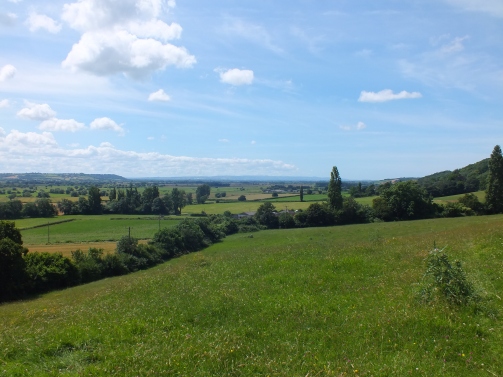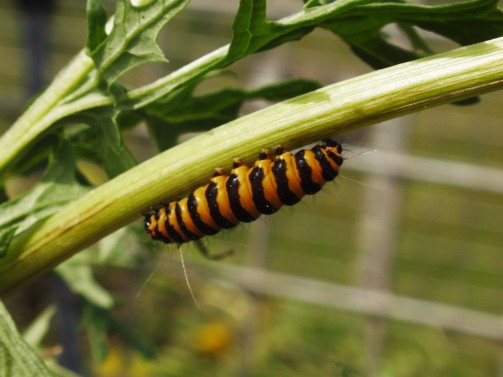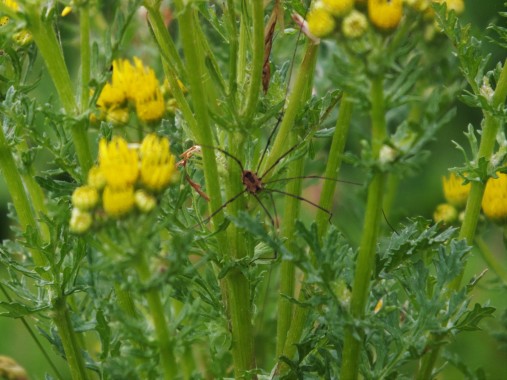Well I never… we are back in double figures with sightings today. All it took was a bit of sunshine magic and there were butterflies everywhere!
When having lunch on the bank, by the oak tree, about 5 danced around me – 3 all at once. It was such a glorious day and has filled me with hope that there is actually a good chance of seeing them next weekend (providing decent weather).
Some individuals of Large Blue are looking weathered and more brown (as they are losing their blue scales with age). Yet there are others that are so very vibrant and fresh looking too. A good mixture for the future, and for seeing us into July 2016.
Not only was the high number of Large Blue sightings exciting, but also I saw this little fella buzzing around:

Hummingbird Hawkmoth
Not so long ago, a visitor was describing a Hummingbird Hawkmoth to me, as I had told him I had never seen one before, of which I could remember. But now I can say I have seen and photographed one for the records, and that I agree; they are stunningly beautiful.
I also saw a very big bush-cricket today:

Young Great Green Bush-Cricket [updated]

A Young Great Green Bush-Cricket hiding behind leaf
Also, there is some gorgeous flowers blooming on site at the moment, including this delight:
Also, some more photographs from visitors:

Terence Baker

Kelvin Irwin – Capsid Bug

Terence Baker
Please do: call the Large Blue hotline, comment on the blog posts, email in (largeblueranger@gmail.com) and write in the visitor book at Collard Hill. I would love to hear from you!
Abbi
51.107136
-2.737725
![FB_IMG_1468608660608[1]](https://ntlargeblue.wordpress.com/wp-content/uploads/2016/07/fb_img_14686086606081.jpg?w=501&h=501)










































![Dave Miller (1)] Dave Miller](https://i0.wp.com/ntlargeblue.wordpress.com/wp-content/uploads/2016/07/dave-miller-1.jpg?w=257&h=213&ssl=1)










































